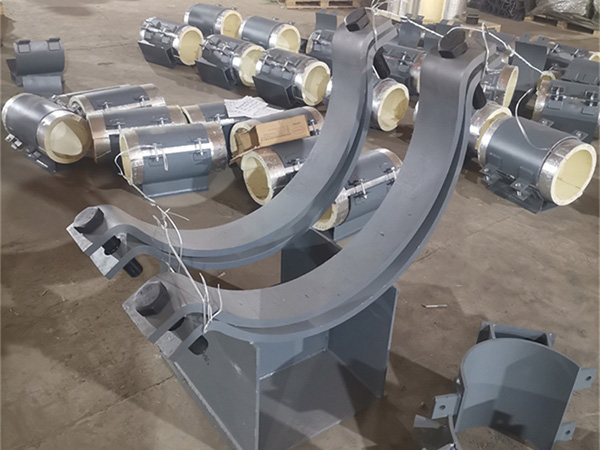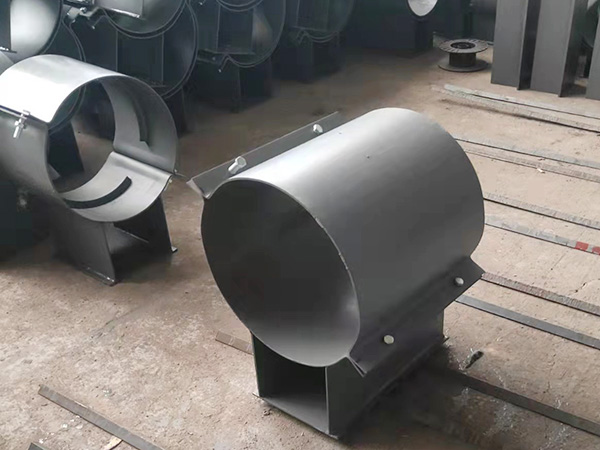Critical Role of Insulation Brackets in Cryogenic Pipeline Systems
Author:Mingde Time:2025-10-10 17:37:59 Click:188
Why Cryogenic Pipelines Need Specialized Brackets
Cryogenic pipelines—responsible for transporting liquefied natural gas (LNG), liquid nitrogen, and other extremely low-temperature fluids—operate under some of the harshest conditions in engineering. Every component must withstand both mechanical and thermal stress. Among these, insulation brackets play a surprisingly crucial role.
At Pipe Support Systems, we recognize that the reliability of an entire cryogenic network often depends on how well these brackets are designed and installed. By working with Chinese manufacturers capable of bulk supply, we deliver cost-effective yet high-performance solutions for industrial and urban-scale projects.


Challenges Unique to Cryogenic Environments
Unlike conventional piping, cryogenic systems face:
·Extreme Temperature Shifts – Materials shrink under cryogenic conditions, stressing brackets and joints.
·Moisture and Frost Buildup – Poor insulation invites condensation, creating ice layers that endanger both safety and efficiency.
·Material Fatigue – Standard metals can crack or lose strength at temperatures below -150°C.
Without well-engineered insulation brackets, pipelines risk structural failure, energy waste, and frequent maintenance.
How Insulation Brackets Support Cryogenic Systems
Brackets optimized for cryogenic service ensure:
1.Mechanical Security – Holding pipes firmly to prevent sagging or displacement.
2.Thermal Efficiency – Reducing unwanted heat transfer and maintaining insulation effectiveness.
3.Corrosion Resistance – Standing up to frost, condensation, and chemically aggressive conditions.
4.Compliance with Standards – Meeting international safety and performance guidelines.
These benefits extend system life while lowering overall operational costs.
Material Choices for Cryogenic Brackets
The choice of material directly impacts system durability and efficiency:
·Stainless Steel (304/316): Excellent toughness and rust resistance, reliable in outdoor or chemical-rich settings.
·Duplex Alloys: Offer higher mechanical strength and resistance to stress cracking at low temperatures.
·Composite Options: Lightweight yet resilient, often reinforced with insulating polymers.
·Pre-Insulated Inserts: Reduce cold bridging and boost thermal performance.
By sourcing from Chinese factories with manufacturer-grade supply chains, project teams gain access to customizable, large-scale, and internationally certified materials.
Engineering and Design Considerations
For cryogenic pipelines, insulation brackets should be designed with:
·Even Load Distribution – Prevent localized stress points that accelerate wear.
·Thermal Flexibility – Allow expansion and contraction without compromising insulation.
·Moisture Protection – Limit frost accumulation at critical contact points.
·Quick Installation – Modular brackets save time and labor during deployment.
Installation Best Practices
Installation quality is as important as design. Recommendations include:
·Correct Spacing: Prevents insulation from compressing under load.
·Accurate Alignment: Reduces stress during contraction cycles.
·Resilient Fasteners: Anti-corrosion bolts extend bracket lifespan.
·Routine Monitoring: Early detection of cracks or ice improves reliability.
Why Work with Chinese Suppliers
Choosing Chinese manufacturers for cryogenic insulation brackets provides clear advantages:
·Competitive Pricing: Strong cost-performance ratio for large projects.
·Bulk Production: Ensures steady supply for industrial-scale infrastructure.
·Tailored Solutions: Brackets designed to exact project specifications.
·Certified Quality: Many plants meet ISO and global compliance standards.
This combination of cost savings, scalability, and customization makes Chinese supply chains highly attractive for cryogenic projects.
Emerging Trends in Cryogenic Bracket Technology
Innovation is reshaping the industry with:
·Vacuum-Insulated Supports: Prevent condensation and improve system efficiency.
·Hybrid Composite Brackets: Merging metals and polymers for strength and insulation.
·Smart Monitoring Designs: Integrated sensors detect stress and temperature changes for predictive maintenance.
These advancements lower downtime, reduce heat loss, and enhance long-term system safety.
Conclusion
Insulation brackets may seem secondary in cryogenic systems, but they are critical to ensuring mechanical stability, thermal efficiency, and safe operation. With careful selection of materials, smart engineering, and proper installation, pipelines can withstand extreme conditions for decades.
At Pipe Support Systems, we specialize in pipe insulation brackets sourced from trusted Chinese manufacturers with bulk supply capabilities, delivering scalable solutions for cryogenic and industrial applications worldwide. By investing in advanced insulation bracket technology today, you secure greater safety, reduced energy losses, and a stronger infrastructure for tomorrow.
References
GB/T 7714:Cao Q, Pojtanabuntoeng T, Esmaily M, et al. A review of corrosion under insulation: a critical issue in the oil and gas industry[J]. Metals, 2022, 12(4): 561.
MLA:Cao, Qing, et al. "A review of corrosion under insulation: a critical issue in the oil and gas industry." Metals 12.4 (2022): 561.
APA:Cao, Q., Pojtanabuntoeng, T., Esmaily, M., Thomas, S., Brameld, M., Amer, A., & Birbilis, N. (2022). A review of corrosion under insulation: a critical issue in the oil and gas industry. Metals, 12(4), 561.
 Hot Products
Hot Products
 Contact Us
Contact Us
Contact:
Mobile:+86 +86 19133378808
Website:mingdepipe.com
Address:










